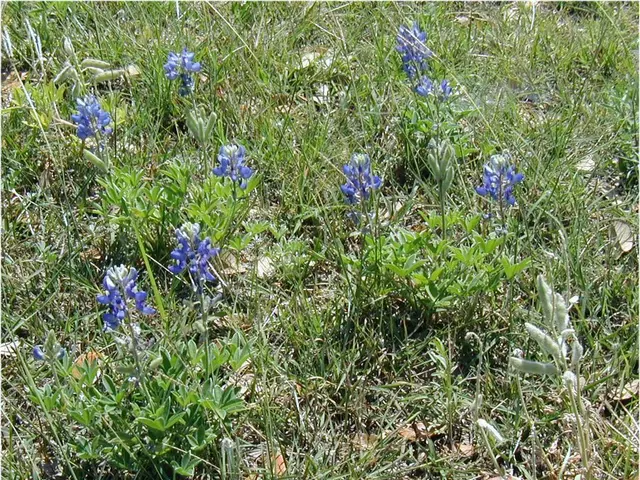Garden Chores I'm Handling in May
Get ready to transform your garden into a vibrant, blooming paradise this May! Nothing beats the excitement of tending to your plants and watching them grow. Here's a simple-yet-effective plan for maintaining and enhancing your garden this month, transforming it into the envy of neighbors!
First, let's handle some essential maintenance tasks:
- Watering System Check: Examine your irrigation system thoroughly. Winter weather and careless gardening activities can cause damages, and it's crucial to check each line before activating your summer water flow[(1)].
- Zone Testing: Ensure your irrigation controller is functioning correctly. Stand outside, test each zone, and walk around to verify every end point. Listen for leaks, as they can be quite loud[(1)].
- Spring Cleaning: Give your established beds a refreshing boost by applying a layer of compost((1)(2)), which will enrich your soil and encourage plant growth. Don't forget to follow up with a layer of mulch to maintain moisture levels and suppress weeds[(2)].
Now, let's move on to specific plant types:
Shrubs, Trees, and Vines
- Prune Spring-Bloomers: Once your spring-blooming plants, such as lilacs and forsythia, have completed their flowering cycle, prune them back. In some instances, like with lilacs, this action may even trigger a second bloom later in the season[(5)].
- New Woody Plantings: Spring is an ideal time to plant new shrubs and trees. The weather is mild, and the ground should be soft after winter rains[(5)]. Make sure you provide your newly-planted trees with the proper fertilizer, as your local garden center can help identify the right one for your specific trees[(5)].
Annual Flowers
- Time to Bloom: May is the perfect month to put annuals in the ground, bringing bursts of color that can last all summer if cared for properly. Pop into your local garden center and pick up annual gems like petunias, lobelia, marigolds, and begonias[(2)]. Keep in mind that annuals are more delicate than perennials, so wait until the threat of frost has passed before planting[(4)].
Perennial Flowers
- Tulips and Bulbs: Don't cut down your tulips after they've bloomed; leave them intact to enable the bulbs to grow and bloom again next year. Once their foliage has yellowed, it's acceptable to divide or move the bulbs. Following tulip bloom, apply a bulb fertilizer to ensure stronger flowering for next year[(4)].
- New Perennials: If you haven't had a chance to plant new perennials in April, you can do so now. The ground should be quite workable, and you'll likely find areas ready for division as you explore your garden[(4)].
- Sad Plant Shelf: Visit your local garden center, grocery store, or any other "sad plant shelf" (SPS) location to find deeply discounted plants that can still thrive with minimal attention. Delphiniums and agastache are among my favorite SPS finds[(4)].

Vegetables
- Greens and Fruits: Tomatoes, peppers, and eggplants are the gardener's delight, and this month marks their appropriate planting time. The key is to wait until the nighttime temperature consistently remains above 50 degrees Fahrenheit[(4)]. If you're unsure about the right time, join your local gardening group, as they're sure to be discussing this topic!
- Perennial Veggies: Perennial veggies like asparagus and artichokes should be starting to grow. Make sure you harvest asparagus spears daily, removing only those larger than your pinky. Once the spears become thinner, let the plant rest for the remainder of the year[(4)]. Watch out for ants and aphid infestations on your artichoke plants[(4)].
Enjoy your green thumb adventure, and good luck turning your garden into a blooming oasis of color and delight!
(1) "Garden Preparation for Spring – Soil Enrichment and Mulching"
(2) "10 Spring Gardening Tasks"
(3) "Prune Spring- Blooming Shrubs and Trees in Spring"
(4) "Planting Scheme: Choosing the Right Plants for Your Garden"
(5) "Spring Garden Chores – Mid-May"
Incorporate these gardening tasks into your home lifestyle this May to enhance your home-and-garden: water your irrigation system carefully, following the inspection for potential damages, and test each irrigation zone and end point for proper function and efficiency. Transform your garden by planting annual flowers like petunias and begonias, while ensuring the health of perennials by dividing them when necessary. Engage in vegetable gardening by planting tomatoes, peppers, and eggplants, as their nighttime temperature consistently remains above 50 degrees Fahrenheit.








